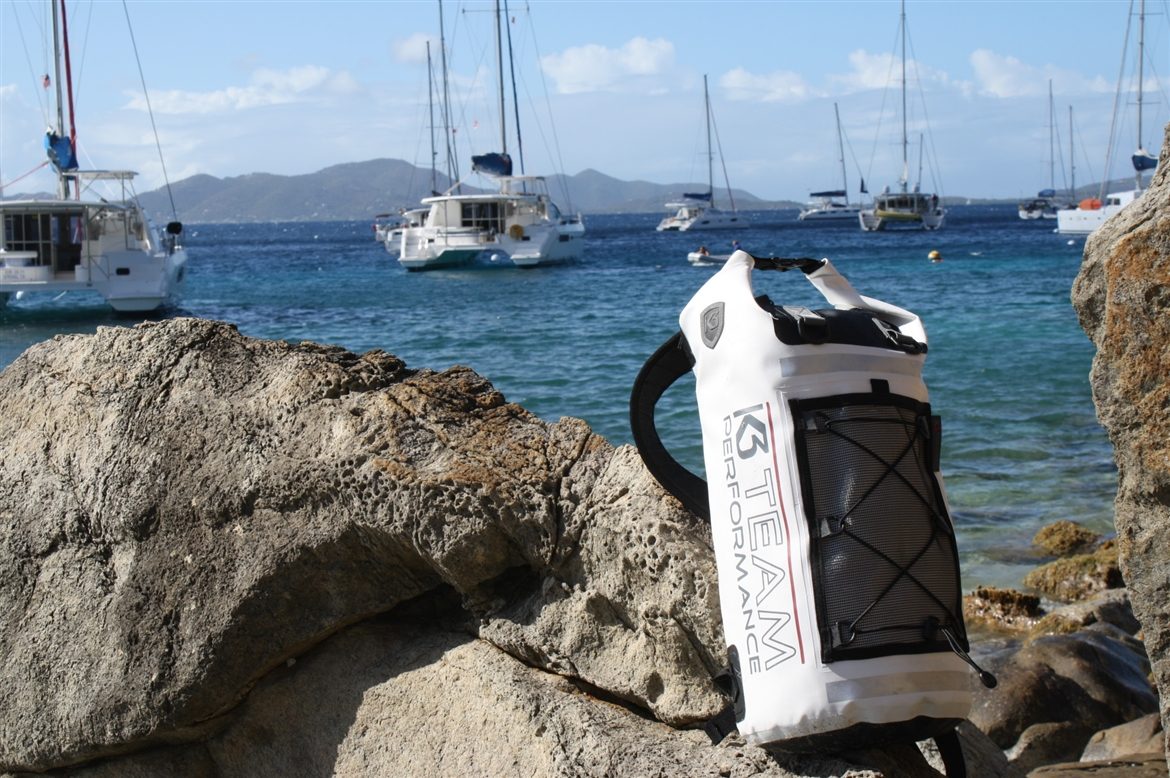Choosing The Right Dry Bag
There are two basic types of dry bag: those designed to be stowed, and those meant to be worn backpack style. All dry bags have some sort of handle, strap or harness, but in many cases these are single cross-chest style slings straps that are not comfortable for long-term wear; these bags fit into the former category, and are primarily intended to be tucked away into a kayak, canoe, sailboat, or other water craft. Backpack style bags on the other hand can be worn for long periods of time in relative comfort, especially as most backpack dry bags have both shoulder and waist straps. (A pack’s waist strap usually carries as much or more weight than the shoulder straps.)
While at first blush one might think a backpack style dry bag would always be the best choice, as it affords the chance for comfortable wearing or for stowing, this is often not the case. Backpack dry bags tend to be much bulkier than their tubular shaped counterparts, making them harder to stash in the hatch area (the storage bulkhead usually in the front) of a kayak or under a seat in a canoe. Backpack dry bags tend also to be larger even when empty and compacted for storage. However, this larger size may be imperative for carrying larger, non flexible items like camp stoves or even laptop computers.
That said, ultimately the most important factor when it comes to choosing dry bag is the volume of gear you will need to keep dry. Logic dictates that the longer expedition will require more supplies and thus more storage capacity. Most dry bags have a storage capacity of between 20 and 30 liters (most internal frame hiking packs average around 60 liters at full capacity), though some offer double and even triple that space. That means your dry bag will likely not be the only gear transport system you bring along for any trip lasting more than a single night or weekend. Make sure your dry bag works with the other bags and gear you’re bringing along; it’s just one part of your larger system.
A Few Words On Dry Bag Maintenance
One of the largest drawbacks to a dry bag is predicated on its very design: just as a dry bag will admirably keep water out, so to will it keep water in. If your dry bag gets wet inside, whether from a leaking water bottle, from spills or splashes that occur while it was open, or from residual water after a cleaning, it will hold that liquid in and resist drying out. That means the chance for mildew and mold growth, and neither of those are good news.
In order to keep your dry bag in good working order, you need to regularly clean its interior using anti bacterial sprays or wipes. A cleaning must always be followed by a thorough drying, including manual drying with towels and then plenty of exposure to the air. Always check your dry bag’s interior and make sure it’s clean before you use it, and make sure to properly clean and dry it before you store it away.


